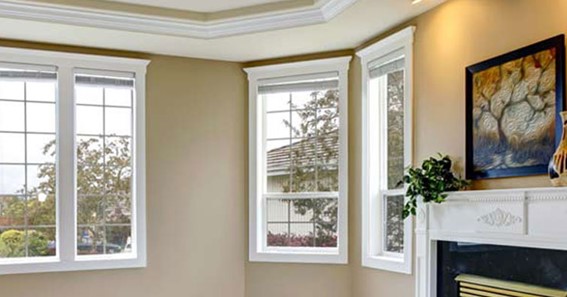There are many types of window replacement units in the market today. Whether you need windows for new construction or replacement units, understanding the types of windows can help you choose the best. Window styles, frame materials, and energy efficiency are some features homeowners consider when buying windows for their homes.
Each window style has its advantages and disadvantages. Some homeowners install different window designs in a home, which is against the designers’ and constructors’ advice. This is because mixing windows replacement unit styles creates a weird look and is likely to reduce your home’s curb appeal and consequently its value.
- Double-Hung Windows
These window replacement units are familiar in many homes. The windows consist of two large sashes which open by sliding the top one downwards and pushing the bottom sash upwards. Double-hung windows are easy to clean as the sashes are tiltable.
The characteristic of these windows is that they are installed in homes with traditional styling. They are also primarily preferred because of their ease of cleaning and lightweight.
Double-hung windows are affordable, and since they are a standard style, you will have a wide selection from many manufacturers.
After some time, the springs that hold the sashes wear out, making the window hard to operate, which is a disadvantage. They are also not very secure as intruders can get into your house through them.
- Casement Windows
Casement windows replacement units have hinges on the sides, and they crack open to the outside, like a door. They are a standard style and are preferred because of their ease of operation and affordability. Casements are more of a modern style, and they can serve the homeowner for a while, depending on the installation style and type of material.
Casement windows are suitable for keeping drafts away and for ventilation. Unlike double-hung, these are secure against intruders because they do not leave ample space when they open. However, the windows bang on the walls when they open in winds and can easily break.
- Awning Windows
Awning window replacement units are made to resemble a casement, only that they open from bottom to top. When they open, awning windows create a shed-like structure and protect the house from rain. The small awning windows are installed in the basement or bathrooms. These windows will protect you from intruders.
Another advantage is that they can remain open for a cool breeze even when it rains. However, they are not very common in homes because the windows are unsuitable for ventilation. They are also likely to fail to function.
- Fixed Windows
Fixed windows are also called picture windows. These windows are mainly found in houses along the coast or near a beautiful forest or garden to give unobstructed views. They are big glass that is permanently fixed. The windows allow a lot of light in the room, but they do not offer much when it comes to ventilation because they do not open to let in air.
Some advantages offer better energy-saving properties since they completely seal when closed. Fixed vinyl windows are mainly for modern homes and are made of different designs. They are also cheaper than the other styles.
When not combined with another operable window, the fixed window cannot ventilate the house. You need to install it with an awning or casement window for fresh air.
- Skylights
These are installed on the roofline to provide light. Roof lights are also not operable and, therefore, unsuitable for ventilation. The advantage of these mostly vinyl windows is that they provide good lighting to the house. You don’t have to worry about where to install them and how to open them.
They also have vents to help cool the home and the attic during summer. However, skylights are easily affected by rain and sun and could cause the ceiling to leak. They also do not last long, as the other windows do.
When installing, skylights require you to cut your home’s roof, so you cannot DIY on them. You should hire contractors to install them for you. If you DIY and get it wrong, they will not function well, and your roof might start leaking.
